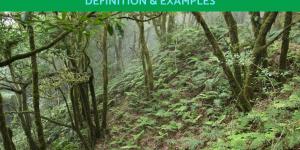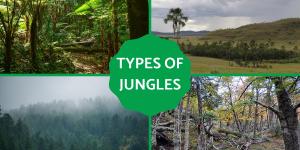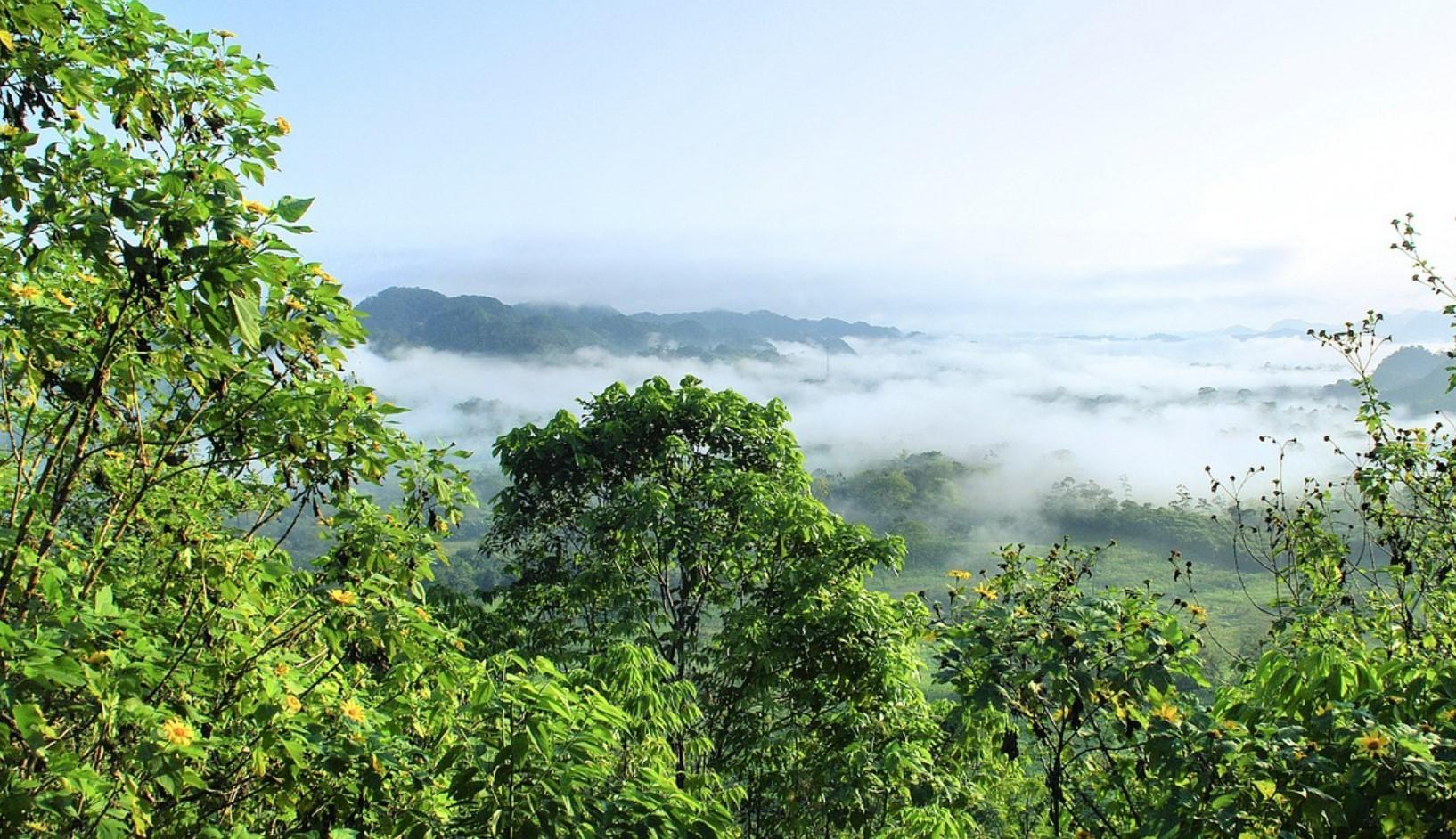What Are Primary Forests? - Definition With Examples


Also known as old-growth forests, primary forests are those which are made up of native tree species which have had a minimal amount of human intervention. With such little interference in their growth and development, primary forests are those which have ecological processes which have remained largely intact for millions of years. These types of forest allow their own forms of regeneration and provide some of the most beautiful natural ecosystems we can find on our planet. Their beauty is perhaps only superseded by their importance for continued life on our planet.
thedailyECO explains more by asking what are primary forests? We provide a definition with examples so you can see them more clearly.
What are primary forests?
Primary forests are also known as old-growthb or first-growth forests. This is due to the age of the vegetation which has been allowed to grow relatively unimpeded for millennia. According to the FAO (Food and Agriculture Organization of the United Nations), primary forests are:
forests in their original natural state in which there are no signs of any type of human activity that have altered their original ecological structure.
An alternate definition comes from the CBD (Convention on Biological Diversity) which defines old-growth forests as forests that have not been felled and have evolved as a result of natural processes and disturbances. This is an important distinction, because it includes those forests in which indigenous peoples coexist using traditional practices that promote conservation and care of the ecosystems.
To be considered as primary forests, they must have regenerated naturally without human intervention. On the other hand, if there was any type of incident, sufficient time must elapse for any human impact to have been completely erased.
Primary forests are just one of the many different types of forests we explore in our companion article.

How primary forests are formed
Primary forests are formed by natural processes that take a great deal of time. The basic process of primary forest formation is the following:
- The area is colonized by native species that arrive by wind, water or through animals or by pre-existing seed banks on the site.
- The first plants to appear will be the so-called ‘pioneers’, fast-growing species that will give way to other more robust species in a process called ecological succession. Learn more about this type of adaptation with our article on what is rapid evolution?
- With the passage of time, the primary forest reaches a stable state. It is this state in which the species present are in harmony with their environment and complex ecological interactions are established. These are then best able to contribute to the resilience and sustainability of the ecosystem.
Primary forests are only one type of forest ecosystem. We explore some others with our article on the different types of ecosystems.

Characteristics of primary forests
Now we have some basic understanding of what are primary forests, we can look at them in more detail by focusing on their defining characteristics:
- There are still 1,110 million hectares of primary forests: according to an assessment of global forest resources produced in the year 2020, there are still 1,110 million hectares of primary forests. Canada, Brazil and Russia alone are home to approximately 60% of the world's primary forests. Unfortunately, the area occupied by these forests has decreased by 80% and the remaining 20% continues to suffer from various types of threat.
- They provide important ecosystem services: old-growth forests are essential ecosystems that provide crucial ecosystem services such as biodiversity conservation, climate change mitigation, freshwater supply, among others. In addition, they play a vital role in sustaining the livelihoods and culture of many local communities and indigenous peoples.
- They harbor a large percentage of biodiversity: primary forests are sites rich in biodiversity since they are the habitat of many species of flora and fauna that interact in complex networks.
- They are carbon dioxide sinks: primary forests act as important carbon sinks, storing large amounts of carbon in their biomass and soils. This contributes to the mitigation of climate change, since it helps to reduce the concentration of greenhouse gases in the atmosphere.
- They are different from secondary forests: old-growth forests are different from secondary forests, since secondary forests are forests that have regenerated after logging or other forms of disturbance. The latter often have a very different ecological structure than untouched primary forests.
- They have greater recovery capacity: primary forests have greater recovery capacity. This means they are more stable, resistant and resilient than secondary forests due to their large percentage of biodiversity, among many other factors.
Examples of primary forests
Some of the most well-known and important forests on our planet are types of primary forest. Here we provide some of the most important examples of primary forests on our planet:
- Amazon: the Amazon is the largest tropical rainforest in the world and is located in South America. It is known for its high levels biodiversity and is considered euphemistically as one of the lungs of the world due to its capacity to absorb carbon dioxide and produce oxygen.
- North American Taiga: the North American taiga, also known as the boreal forest, is a vast forested region that stretches across northern North America, including parts of Canada and Alaska. It is characterized by coniferous forests and a variety of fauna species adapted to cold and humid conditions.
- Congo Rainforest: located in central Africa, the Congo Rainforest encompasses a large part of the Congo Basin. It is the second largest tropical forest in the world after the Amazon and is considered one of the most important and biodiverse primary forests on the planet.
- Western Caucasus: it is the only untouched mountainous area in Europe and has been declared a World Heritage Site by Unesco. It includes a number of national parks and nature reserves that protect its unique ecosystems, such as deciduous forests, mixed forests, and coniferous forests, as well as alpine and subalpine grasslands. Learn more about the flora of such forests with our guide to the different types of trees.
- East Siberian Taiga: the Siberian Taiga is a forest ecosystem characterized by vast coniferous forests, mainly spruce and pine, interspersed with swamps, rivers, and lakes that is located in northern Siberia in Russia.
- Indonesian tropical rainforest: it is the third largest in the world and the one with the greatest biodiversity. It is located in the Indonesian archipelago, in Southeast Asia.

Flora and fauna of primary forests
To better understand the great biodiversity of primary forests, it can be helpful to look at the flora and fauna of these massive ecosystems in more detail:
Flora of primary forests
- Primary forests are made up of large trees.
- Epiphytic plant species, such as bromeliads and orchids that grow on trees and are adapted to life at heights.
- Great variety of other more primitive plants , such as ferns, mosses and lichens that cover the ground and the trunks of the trees. Learn more about some of these more primitive plants with our guide to bryophyte plants with examples.
Fauna of primary forests
- Mammal species, such as jaguars, tigers, elephants, monkeys, tapirs and bears, among others. Many of them are considered emblematic of primary forests and are in danger of extinction.
- A great diversity of bird species that use primary forests as habitat to nest and feed.
- Amphibians and reptiles such as poison dart frogs, snakes and lizards which find refuge in primary forests and are indicators of ecosystem health. For this reason they are often known as indicator species.
- Large number of insects including endemic and specialized species that play a fundamental role in pollination, decomposition and nutrient cycles.
It should be noted that the flora and fauna of primary forests varies according to the geographical location and the particular conditions of each ecosystem. However, these forests are characterized by their high biodiversity and the presence of unique species that have evolved in a natural environment and relatively undisturbed by humans.
Learn more about how flora and fauna integrate in a given ecosystem by looking at the difference between biotopes and biocenosis.
If you want to read similar articles to What Are Primary Forests? - Definition With Examples, we recommend you visit our Ecosystems category.
- U. N. Food and Agriculture Organization. (2021). Global Forest Resources Assessment 2020. Retrieved from:
https://www.fao.org/forest-resources-assessment/2020/en/ - Merino, A. (2021). The map of the virgin forests of the world. Retrieved from: https://elordenmundial.com/mapas-y-graficos/mapa-bosques-virgenes-mundo/








